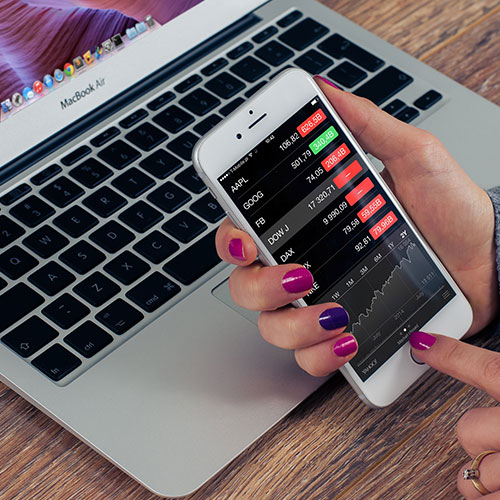Understand the various types of markets around the world. Here’s a brief introduction to financial markets and their scope.
A place where people and companies, traders, come to buy/sell assets such as stocks, currencies, commodities and other products.
There is a wide range of assets available to the traders, which they can choose to trade. Here, we are listing the major types of assets available for traders across financial markets around the world.


Currency market is also known as Forex market. Forex market is the world's largest and most active trading market. It has become accessible and very popular to individual traders.
Forex trading is a different from other asset trading. In other asset trading, profit and loss depends only on the Buy and Sell rate. However, currency trading is done in pairs, which means that one currency is traded against another.
Making profits and loss in currency markets are relative and the same is measured by how one currency performs relative to another. For example, on a given day, the US dollar (USD) could appreciate relative to the euro (EUR) but decline relative to the Australian dollar (AUD).
Being one of the long standing and strong currency, US dollar is the basis of forex trading across the world. The most sought after currency pairs, popular as the majors, include EURUSD, USDJPY, GBPUSD, USDCHF, AUDUSD and USDCAD.
Currency pairs that are not associated with USD are known as minor pairs or cross pairs. Popular cross pairs include GBPEUR, EURJPY, GBPJPY, EURCHF and AUDCAD. These pairs have slightly wider spreads, compared to majors, and are not as liquid, but they are sufficiently liquid markets.
Exotic pairs involve a major currency and an emerging market currency. Examples of Exotic pair include USDTRY, USDMXN, EURHUF and USRSGD. These pairs are not as liquid, and the spreads are much wider.
Currency pricing is based on the first currency in the pair, which is known as the base currency. For example, the currency pair USDJPY denotes how much JPY it would take to buy one USD. When USDJPYrate goes up, USD is gaining value/ JPY is losing value and when USDJPY goes down, USD is losing value/JPY is gaining value.
To add to this, the newest entry to the currency market is cryptocurrencies. Crypto currencies such as Bitcoin, Ethereum, Litecoin etc. gets traded in the financial market. Just like other currencies, Crypto currencies also get traded in pairs with other currencies such as US Dollar and Euro.

Commodity market is a market for buying and selling – trading – raw or primary products. Commodities are divided in to two types – Hard commodities and Soft commodities.Hard commodities are generally extracted from natural resources – metals, oil etc. – and Soft commodities are mainly agricultural products – cocoa, wheat, Soybeans etc.
Hedgers and speculators are two main types of participants in commodities market.Hedgers lock in a price for a product that they plan to deliver at a future point in time. Speculators attempt to profit from changes in prices as supply and demand conditions change. In the case of speculators, they have no intention of delivering or taking delivery of physical goods.

Equity indices are a set of shares, which can be traded like an individual share. By trading indices, traders are able to speculate on the changes in share price of major companies in a single market. For example, Australia 200 consists of largest and most actively traded companies in S&P / ASX 200.
Most popular Equity Indices are:
The share price of the largest company within the set will have the most impact in the value of the indices. Also, indices in the same region generally have a tendency to perform similarly over a period of time because the largest companies,mostly, have mutual agreements and associations.